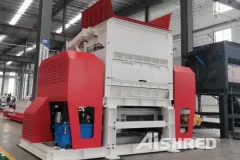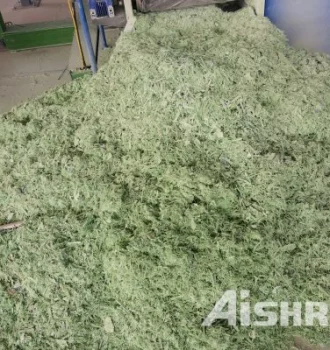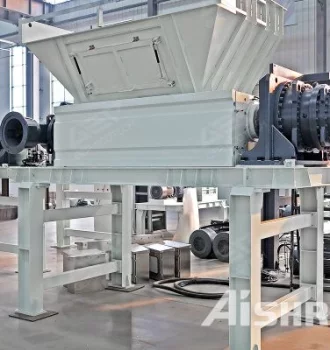
Many people are looking for hazardous waste disposal companies or hazardous waste disposal sites near them. GEP ECOTECH has compiled a list of companies across the United States that can handle hazardous waste. You can quickly find hazardous waste disposal service providers in your corresponding city.This list has been compiled from publicly available websites and databases, to serve as a reference for those seeking hazardous waste treatment facilities. We strive to keep the information updated; however, we do not guarantee its accuracy, completeness, or timeliness. Users are encouraged to independently verify the information and directly contact the listed facilities to confirm their credentials and services.If you identify errors or prefer your facility not to be included in this directory, please contact us, and we will address your concerns promptly.Site IDSite NameCity, StateAK6210022426US ARMY GARRISON FORT WAINWRIGHTFORT WAINWRIGHT, AKAK8570028649JOINT BASE ELMENDORF-RICHARDSON (JBER)JBER, AKAK96903307


Oily rags are a hazardous waste, proper disposal of oily rags is essential for industrial safety and compliance. Depending on the volume of oily rags generated, different shredding solutions may be appropriate. This article introduces two types of oily rag shredder machines available for sale: the dual-shaft linear shredder for small-scale disposal and the enclosed shredding system for large-scale disposal.Dual-Shaft Linear Shredder: For Small-Scale DisposalFor facilities generating moderate amounts of oily rags, the dual-shaft linear shredder offers an efficient, compact solution.Key Features:Compact Design: Fits in limited spaces.Robust Construction: Ensures durability.Efficient Shredding: Two powerful shafts cut through rags effectively.Advantages:Cost-Effective: Affordable for small-scale operations.Ease of Use: Simple controls and low maintenance.Environmental Compliance: Proper disposal of oily rags.Enclosed Shredding System: For Large-Scale DisposalFor larger facilities producing significant volumes

Against the backdrop of the rapid development of modern industry, the generation of hazardous wastes has shown an explosive growth trend. These hazardous wastes are not only diverse, but also complex in nature, covering a wide range of hazardous characteristics such as radioactivity, infectiousness, corrosiveness, flammability and explosiveness, chemical reactivity and toxicity. In the face of this challenge, the hazardous waste disposal industry is ushering in unprecedented development opportunities, especially in the field of environmentally sound disposal.Hazardous wastes that are not properly disposed of will not only seriously damage the ecological environment, but also pose a potential threat to public health. In view of this, environmentally sound treatment technology has emerged as a key link in hazardous waste management. Among them, shredding treatment, as the initial step of environmentally sound treatment, is crucial for reducing the volume of waste and enhancing the efficiency of subsequent


Solid radioactive waste (SRW) poses significant challenges in terms of its safe management and disposal. To address these challenges, advanced shredder technology has emerged as a crucial tool for grinding and homogenizing SRW.Understanding Solid Radioactive Waste (SRW)SRW encompasses various materials contaminated with radioactive substances, such as protective clothing, tools, and equipment used in nuclear facilities. Proper management of SRW is essential to prevent environmental contamination and protect public health. However, the heterogeneous nature of SRW complicates traditional disposal methods, necessitating specialized treatment approaches.The Significance of Shredder TechnologyShredder technology plays a pivotal role in the treatment of solid radioactive waste by facilitating its grinding and homogenization. Unlike conventional methods, shredders are designed to break down SRW into smaller, uniform particles, which enhances subsequent treatment processes. This technology ensures efficient


Lithium Ion Battery Shredding Machine
2024-01-20Lithium-ion batteries have become an integral part of modern life, powering everything from smartphones and laptops to electric vehicles and renewable energy storage systems. However, as these batteries reach the end of their lifespan or become damaged, responsible disposal and recycling become paramount to prevent environmental harm and recover valuable resources.The Importance of Lithium-Ion Battery RecyclingLithium-ion batteries are known for their high energy density and long lifespan. Still, like all batteries, they eventually degrade and need replacement. Improper disposal of these batteries can lead to environmental pollution, as they contain toxic materials such as lithium, cobalt, and nickel. Recycling lithium-ion batteries is not only environmentally responsible but also economically viable due to the valuable materials they contain.The Lithium-Ion Battery Recycling ProcessCollection and Sorting: Used lithium-ion batteries are collected from various sources, including electronic waste recycling


With the acceleration of industrialization, the generation of hazardous waste has increased year by year, and hazardous waste incineration and disposal has become a common treatment method. It has the advantages of high efficiency, energy saving and harmlessness, however, this treatment method faces many problems and challenges in practical application. In this paper, we will discuss the current situation, problems, and possible resource solutions of hazardous waste incineration and disposal.Current status of hazardous waste incineration for disposalDisposal of hazardous wastes refers to the incineration of hazardous wastes and other methods of changing their physical, chemical and biological properties to reduce the amount of waste generated, reduce the volume of solid hazardous wastes, reduce or eliminate their hazardous constituents, or hazardous wastes are finally placed in a place or facility that meets environmental protection regulations and is no longer retrieved.There are two main types of hazardous


The treatment and management of hazardous waste occupies an important position in the field of environmental protection, and shear shredders, as one of the key equipment, are widely used in the field of hazardous waste shredding. This article will delve into the reasons why shear shredders are often used in hazardous waste shredding, and reveal their advantages and applicability.Working principle of shearing shredderThe shear shredder cuts and tears the waste into smaller particles through high-speed rotating blades. Its working principle is to place the waste between the blade and the counter knife, and decompose the waste by shearing, tearing and other forces. Shear shredders usually have multiple blades such as dual shafts, quad shafts, etc., which can effectively cut waste into pieces of different sizes. Advantages of Shear Shredder in Hazardous Waste ShreddingWide adaptability: The shear shredder is suitable for processing many types of hazardous waste, such as metal waste, plastic waste, rubber waste,


With the continuous development of modern industry, the number of various hazardous wastes is increasing, and a variety of hazardous wastes have a variety of dangerous characteristics, including radioactive, infectious, corrosive, flammable and explosive, chemical reactive and toxic, hazardous waste disposal industry ushered in a period of rapid growth. Data show that the existing capacity of hazardous waste is mainly for comprehensive utilization of resources, and the capacity gap of harmless disposal of hazardous waste in China alone is about 20 million tons/year. If hazardous waste is not properly disposed and managed, it can easily pollute the environment and seriously affect human health and the ecological environment. This kind of hazardous waste harmless treatment has been widely used, hazardous waste harmless treatment in the beginning is shredding treatment, for example: IBC ton drums, 200L iron drums, plastic drums, ton bags, paint drums broken to reduce the volume, easy to follow the treatment,


The storage of chemical solvents is generally done in special plastic drums, also called chemical drums, the more common ones on the market are the big blue drums. Plastic drums are stable in nature and do not affect the stability of the stored solvents, they also have a good isolation effect on all types of corrosion and toxicity, and are therefore widely used in the chemical industry. The iconic big blue drums in particular, with their better shading properties, are used particularly often. This has also resulted in what we are used to calling the big blue barrel crushing process when dealing with used chemical barrels. The big blue drums can be divided into hazardous solid waste and ordinary plastic drums according to their use. In addition to the big blue drums used to store hazardous chemical solvents, other storage of harmless items are harmless ordinary plastic drums, and their recycling treatment is naturally different. When crushed, ordinary plastic drums only need to be shredded by shredders, and


Oil Filter Shredder for Sale
2022-08-18Automotive filters (cars and trucks) and industrial filters (bulldozers and dump trucks) are used to filter various oils. This type of filter consists of different materials: iron shell, bolt, cellulose filter, rubber gasket, mineral oil or synthetic oil. The treatment process mainly depends on the material constituting the filter and whether there is residual oil. The typical recovery method is to discharge the residual oil in the filter, break the filter and separate the metal sheet from the filter paper. Although the used oil filter is a waste, it is illegal to treat it without treatment qualification, but its recycling value is very high. After disassembling it, the waste oil, metal, and filter paper can be recycled, which can be sold and create considerable economic profits. The crushing and disassembling equipment of waste oil filter element and filter is relatively simple. The requirements can be completed by using a double shaft shear crusher + conveyor. Movable containers can be placed under the


GV series intelligent tower type hazardous waste shredding system is a set of intelligent, modular and one-stop hazardous waste pretreatment scheme independently developed by AIShred. It integrates lifting system, storage bin, safety protection system, shredding system, fire protection system, intelligent control system and maintenance system, which can provide professional and intelligent shredding process for customers. One of our customer from East Asia bought our GV series tower type hazardous waste shredding system to process contaminated IBC tank and steel drum, the shredding system working very well obtained the high praise from the customer. Application of the hazardous waste shredding systemHazardous waste "rotary kiln - waste heat boiler" disposal system;Cement kiln co-disposal;SMP (shredding - mixing - pumping) system;Battery recycling;Fuel/chemical drum, IBC tank, etc. Industrial wasteAdvantages of the hazardous waste shredding systemSystem integration process, overall safety and environmental pro


What Is Hazardous Waste Disposal Equipment?
2022-05-02Hazardous waste is toxic, harmful, volatile and other wastes that cause serious harm to human body, such as chemical drums, the internal residual chemical liquid. For the disposal of this type of material, we must first ensure the safety of disposal, and today we lead you to understand our GEP ECOTECH's hazardous waste disposal equipment. GEP ECOTECH shredders feature a dual-layer safety protection system to ensure secure and reliable operation. First is the passive fire suppression system, which activates automatically in the event of a fire. Upon detection by the induction system, fire-extinguishing agents such as carbon dioxide, dry powder, or steam are released to suppress the fire. Second is the active nitrogen protection system, currently the primary method used. Before the shredder starts, nitrogen is injected into the shredding chamber, reducing oxygen concentration to a safe level. The system only operates once oxygen levels fall below a preset threshold. An integrated online oxygen monitoring system



